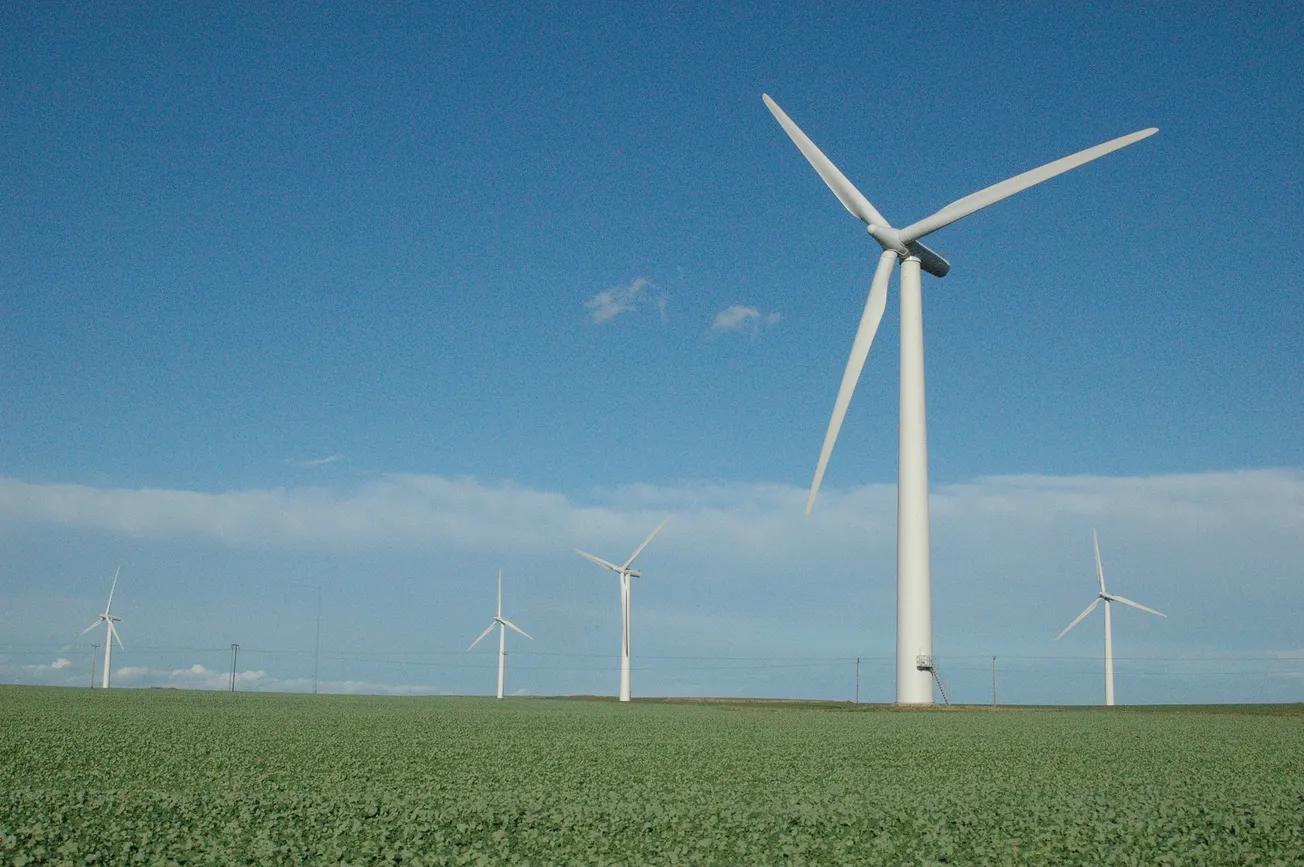Table of Contents
Duggan Flanakin
Duggan Flanakin is a Senior Policy Analyst with the Committee For A Constructive Tomorrow. A former Senior Fellow with the Texas Public Policy Foundation, Mr. Flanakin authored definitive works on the creation of the Texas Commission on Environmental Quality and on environmental education in Texas.
Eagles, bats, whales, and multiple other species are suffering and dying from wind turbine blades, pilings, and cables – and more. Surely, they want to stop the slaughter. We do.
Chinese Uighurs, too, would likely love to vote in the November U.S. elections. Like many Congolese children, they, too, are suffering and dying to satisfy the egos and half-truths of the climate cabal. The children, of course, are way too young to vote.
Much has been written about the downsides of offshore and onshore wind turbines, from noise pollution to the major problem of disposing of used turbine blades. But nothing has shaken the determination of the Biden Administration – and the wind industry – to continue to subsidize and fast-track their permitting despite rising opposition.
One might ask why.
And yet, the answer must be obvious. The windbags have committed to wind at any price (they get others to pay) and cannot back away now without losing their investments in both wind and wind politics.
The chief federal proponent of offshore wind is the Bureau of Ocean Energy Management (BOEM), created in 2010 by Obama Energy Secretary Steven Chu, the physicist who won a Nobel Prize in 1997 for his research into the cooling and trapping of atoms with laser light.
One of Chu’s bright ideas is a “global glucose economy,” in which glucose and cellulose from tropical plants would be turned into biofuels and bioplastics. The theory is that glucose fuels would burn clean and produce few chemical byproducts, while glucose bioplastics would be eco-friendly – unlike today’s plastics, which end up in landfills.
Very little of the United States is amenable to growing “tropical plants,” hence such an economy would be built either via neocolonialist seizure of massive acreages or the repurposing of even more land now used for growing food for the world’s seven billion people. This land would likely be in sub-Saharan Africa, southeast Asia, and Central and South America (the Amazon?).
Such an economy might save the lives of whales, bats, and eagles – and it might not even require the massive subsidies that have “fueled” the wind and, solar and electric vehicle industries. One writer suggests that a combination of biological processes, computer-assisted design, and human intelligence (aided by artificial intelligence?) could trigger a revolution in manufacturing and construction.
Wind turbines, by contrast, are built with steel, concrete, and (well) today’s plastics. They also have a fairly short lifespan (far shorter than that of oil rigs), as do solar panels (which, as many recently learned, are subject to damage from hail and other forces of nature). Electric vehicle batteries are massive and today depend on intensive mining operations conducted by virtual slaves and actual children.
The BOEM itself is a twin offspring of the old Minerals Management Service, with the Bureau of Safety and Environmental Enforcement (BSEE) as its mirror image.
One might think that the BSEE, “America’s lead agency charged with advancing safety, environmental protection, and conserving natural resources related to energy development on the U.S. Outer Continental Shelf,” would find objectionable the near-extinction of right whales and the deaths of many humpback whales.
One might think that the massive concrete foundations and the disturbance of the ocean floor all the way to the surface during construction would violate the principles of “environmental protection,” or at least of “conserving” the natural resources upon which fishermen, lobstermen, and other seafaring industries rely for their livelihoods and those who eat fish and seafood.
One might even think that the agency concerned with “safety” might even find that offshore giant turbines could pose safety issues for mariners and marine life as well.
But who’s kidding? Whales, fishermen, lobstermen, recreational boaters, and even oceangoing vessels do not have the deep (subsidized) pockets of those giant corporations investing in offshore wind. And the Biden Administration, via the misnamed “Inflation Reduction Act of 2022,” is prioritizing offshore wind leasing despite local and conservationist opposition.
The Biden commitment to giant wind is such that it granted a waiver on development fees for the 800-megawatt Vineyard Wind project offshore Massachusetts, the first in the U.S. to deliver electricity to the grid. According to uncovered internal documents, Vineyard would likely have not been completed had not the BOEM waived the fees intended to protect taxpayers.
The waiver means that Vineyard has 15 years after startup of operations to begin paying the development fee – sans 15 years of accrued interest. This is despite a federal statute that mandates developers pay these hefty fees (though not nearly as high as those for nuclear projects) prior to construction. The fees are designed to guarantee that the property is returned to its original state after a lessee departs its lease – for example, should Vineyard Wind prove unprofitable.
Does anyone remember the $600 million boondoggle that was Solyndra?
The Biden windbag juggernaut suffered a body blow in January when Equinor and BP announced the cancellation of a contract for the proposed Empire Wind 2 project. The companies and the New York State Energy Research and Development Authority agreed on the termination of the project. Equinor and BP blamed inflation, interest rates, and supply chain disruptions for making the project no longer viable.
While the smaller Empire Wind 1, hailed as a success of “Bidenomics,” was approved last November, its own viability may be questionable given the demise of its big sister. The Danish energy company Ørsted had just weeks earlier cancelled its Ocean Wind 1 and 2 twin projects, planned for offshore New Jersey, also because of “negative economic conditions,” specifically, inflation, interest rates, and supply chain disruptions.
Fancy that! Inflation Reduction Act projects are being cancelled because of inflation!
Despite these giant wind collapses, Dominion Energy is preparing to place and drive 178 monopiles into the Atlantic Ocean for a huge offshore wind facility offshore Virginia Beach while challenging a lawsuit filed on behalf of right whales to stop the habitat destruction.
The plaintiffs won a brief reprieve based on evidence that Dominion lacked authorization from the National Marine Fisheries Service to allow its dynamic positioning thrusters to exceed NOAA’s harassment threshold established under the Marine Mammal Protection Act. Dominion had already been granted NMFS authorization to “harass” up to 80,000 marine animals while conducting pile driving and sonar surveys.
The chicanery was even worse in the Great Lakes, where the developer of the proposed Icebreaker wind project reportedly failed to present a reasonable proposal to protect wildlife or the quality of lake water from lubricating oils.
True environmental non-protection!
Another report says the oft-vaunted Swedish wind industry is facing a total financial collapse, with company losses from 19% to 90% of turnover “because the industry cannot produce electricity at a cost below the market price despite extensive subsidies.”
Yet the Biden Administration ploughs ahead, unfazed by economic realities.
Odd, is it not, that the same administration that has blocked multiple onshore mining permits, revoked oil and gas leases, and demanded protection for not-so-endangered species is so bent on wind energy projects that it is willing for the right whale to join the passenger pigeon in extinction?
With neither energy nor environmental protection as legitimate rationales, one has to wonder about the true motives for pushing offshore wind.
A version of this article originally appeared at Real Clear Energy









